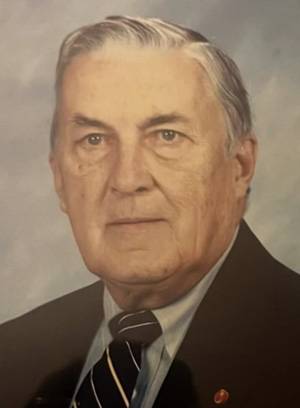“The enemy doesn’t come by boat; he arrives in a limousine.” These words feel especially relevant when considering the renewed push for the STAMP project.
If you grew up in Oakfield, like me, the term “STAMP Project” might stir faint memories from years past. But those memories never truly faded. Now, the project is ramping up again—despite a disastrous history of pipeline spills, covert dealings, and broken promises.
As adults, it’s our responsibility to ask tough questions of these polished businessmen who promise jobs and prosperity. And as we do, we must remember who has been consistently protecting the land—the Indigenous peoples. They are the guardians of 80% of the world’s biodiversity, including the sacred lands of the Tonawanda Seneca Nation, where their stewardship is critical.
When it comes to matters of land and environment, siding with the protectors of biodiversity is not just wise — it’s necessary for the well-being of future generations.
Let’s take a closer look at STAMP’s recent track record.
The STAMP Pipeline Spills
In August and September 2023, there were three ‘fracouts’ of hydraulic drilling fluid—a mixture of water and clay slurry—from the STAMP pipeline. These spills resulted in hundreds of gallons of fluid contaminating federally protected wetlands in the Iroquois National Wildlife Refuge.
Mark Masse, Vice President of Operations for the Genesee County Economic Development Center (GCEDC) tried to downplay this environmental fallout by dismissively referring to the spilled material as “mud.” This attempt to minimize the severity of the situation is a red-flag. Such language demonstrates a fundamental disconnect from the principles of environmental science and the reality of the harm caused by these spills. This tone fosters divisiveness and undermines the collaborative efforts needed to protect both our natural resources and our communities.
In response to the frac-out spill, the U.S. Fish and Wildlife Service revoked a critical permit for constructing the wastewater pipeline in September 2024, following months of pressure from the Tonawanda Seneca Nation and its allies. Adding to this, the DEC reprimanded the GCEDC and its contractors for failing to promptly notify the proper authorities about the spills. While the contractors informed DEC staff on the day of the incident, they neglected to alert the Bureau of Ecosystem Health immediately, leaving drilling fluids in the wetlands for over two weeks. Cleanup didn’t begin until September 22, and wasn’t fully completed until recently.
Given this, it’s astonishing that local leaders would even consider continuing to work with contractors who have already demonstrated incompetence at best—or reckless dishonesty at worst.
At least Orleans County has had enough. In September 2023, they took legal action and filed a lawsuit in the state Supreme Court against the Genesee County Economic Development Center (GCEDC). They’re asking the court to stop the construction of the wastewater pipeline meant for the Science, Technology, and Advanced Manufacturing Park (STAMP).
The lawsuit claims that the GCEDC broke state law while trying to build the pipeline. It says that they created the Genesee Gateway Local Development Corp. (GGLDC) and STAMP Sewer Works in an illegal way. Orleans County also argues that the pipeline would seriously harm Oak Orchard Creek, which is important to the county’s fishing and tourism businesses.
The lawsuit further states that, because the GCEDC couldn’t get Orleans County’s permission to build the pipeline, it started illegally acquiring the necessary easements from property owners in Orleans County to build it.
“They started construction without having all their ducks in a row and did so at their own risk,” said Jennifer Persico, an attorney representing Orleans County. “This behavior is entirely consistent with their actions throughout this entire process.”
She’s right. The residents of Genesee County are supporting this pipeline at their own risk — risking the beautiful wetlands that are integral to the rural life we cherish here.
Are we really so desperate? So gullible?
The Fox Guarding the Henhouse
This brings us to an even larger issue: the Genesee County Economic Development Center (GCEDC) itself. Steve Hyde, the former head of the GCEDC, made a suspicious amount of money while priming the STAMP location and courting big businesses to the area. He retired recently, but it’s worth questioning the motives behind this entire operation.
The real problem lies in the GCEDC’s unchecked power over this situation. The GCEDC has been allowed to act as the “lead agency” for all aspects of the state’s SEQR environmental review process. Think about that for a moment: the same organization profiting from pushing the STAMP project is also responsible for overseeing its environmental compliance. This is a bold case of the fox guarding the henhouse.
Unsurprisingly, the environmental review process under the GCEDC’s leadership has been sloppy at best and negligent at worst. An independent review revealed Hyde’s salary and bonuses increased significantly during periods when he aggressively lobbied businesses to consider the STAMP site. Their profit motive creates a glaring conflict of interest, especially when you factor in their lackluster oversight.
Are we really supposed to trust the judgment of an agency that cuts corners on environmental protections while padding its own bottom line?
The Hollow Promises of Jobs
Politicians love making promises, especially the enticing kind. They’re not fools— they know Western New York is struggling, just like much of the working class across the country.
So, when businessmen roll into town claiming the STAMP project will create 9,000 jobs, it’s easy for folks to trade their common sense for a sliver of hope. Senator Chuck Schumer and Governor Kathy Hochul, heralded STAMP as a beacon of high-tech opportunity, even going so far as to pressure the regulators to issue permits necessary -- causing violations of federal law and a state policy.
That was then. Now, they’re pivoting. Instead of the promised 9,000 high-tech jobs, the site will likely employ just a few hundred people—and it won’t be in advanced manufacturing. Instead, the focus has shifted to data centers.
Why the change? Because the developers have failed to attract tenants in advanced manufacturing or semiconductor production. As a result, they’re pivoting to data centers, which bring far fewer jobs but come with immense environmental costs.
Data centers come with massive environmental footprints. They consume staggering amounts of energy and water, emit greenhouse gases, and generate disruptive noise, light, and air pollution. These facilities are notorious for being terrible neighbors, degrading quality of life while straining local resources like the power grid.
But, of course, the suits insist their data center will be different. They assure us they can be trusted.
Sure — just like we could trust the pipeline’s construction.
GCEDC has even described their current process of reviewing applications from three different data center investor groups as a “sweepstakes.” But let’s be honest—there are no winners here, not for local residents, not for the community, and certainly not for the local environment.
This is the same gamble they’ve been selling for years. And based on STAMP’s history, the odds aren’t in our favor. Is it really worth risking the land, your home, and your community for a vague promise of development and jobs? In the future, will the data center be sold to another company? Will jobs be downsized as more automation makes human workers irrelevant?
It seems the developers have failed to attract advanced manufacturing tenants and are instead offering us this pivot—one that benefits them more than it ever will us.
A Call to Action
It’s time for local residents to step up and demand accountability. Attend your Town Board meetings and ask the hard questions: Who is truly benefiting from this project? Why are we continuing to partner with organizations that have already proven to be careless and self-serving?
For those looking to get involved, check out the work being done by the Allies of the Tonawanda Seneca Nation. They’ve been tracking the STAMP project closely and advocating for the protection of our region’s natural resources and quality of life.
In closing, I anticipate that the Genesee County Economic Development Center will dismiss any significant concerns as hysterical or misinformed — after all, their primary objective is to quell worries and push business forward.
One cannot claim to care about the environment while continuing to disregard and disrespect the rights of Indigenous peoples. They are on the frontlines, combating the disastrous industrialization and destruction that directly fuel the climate crisis we face today. Ignoring their warnings is a grave mistake — they have been fighting to protect this land far longer than any of us.
Thus, it should go without saying: when it comes to matters of environmental preservation and land sovereignty, ensure you stand with the true guardians of biodiversity—the people of the land.
Time is ticking. Spread the word by informing others — let us not have businessmen pull the wool over our eyes.


